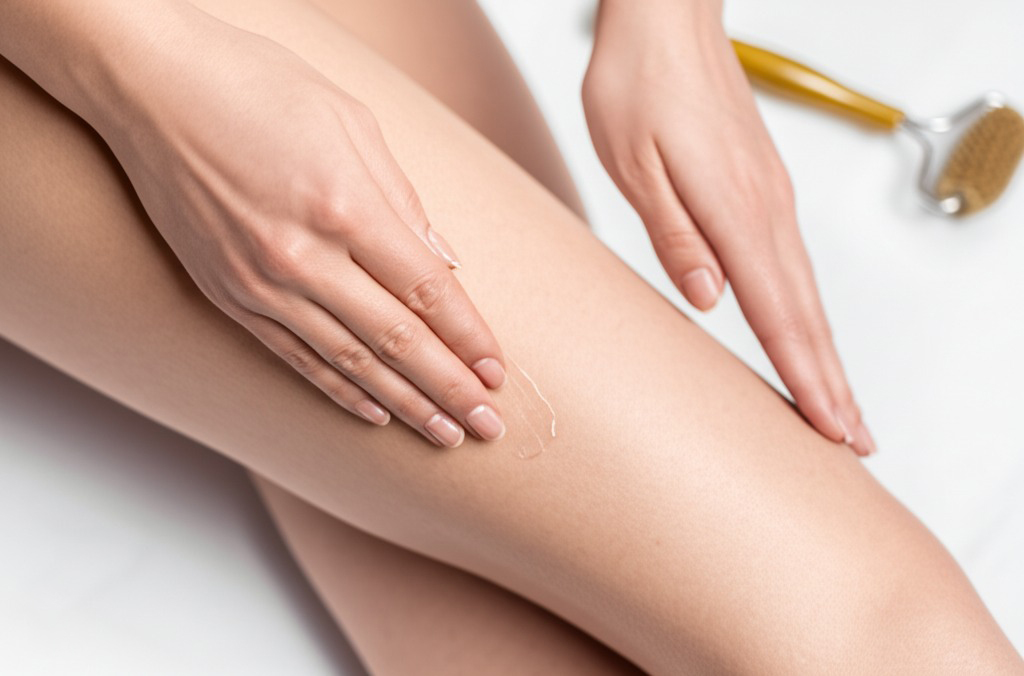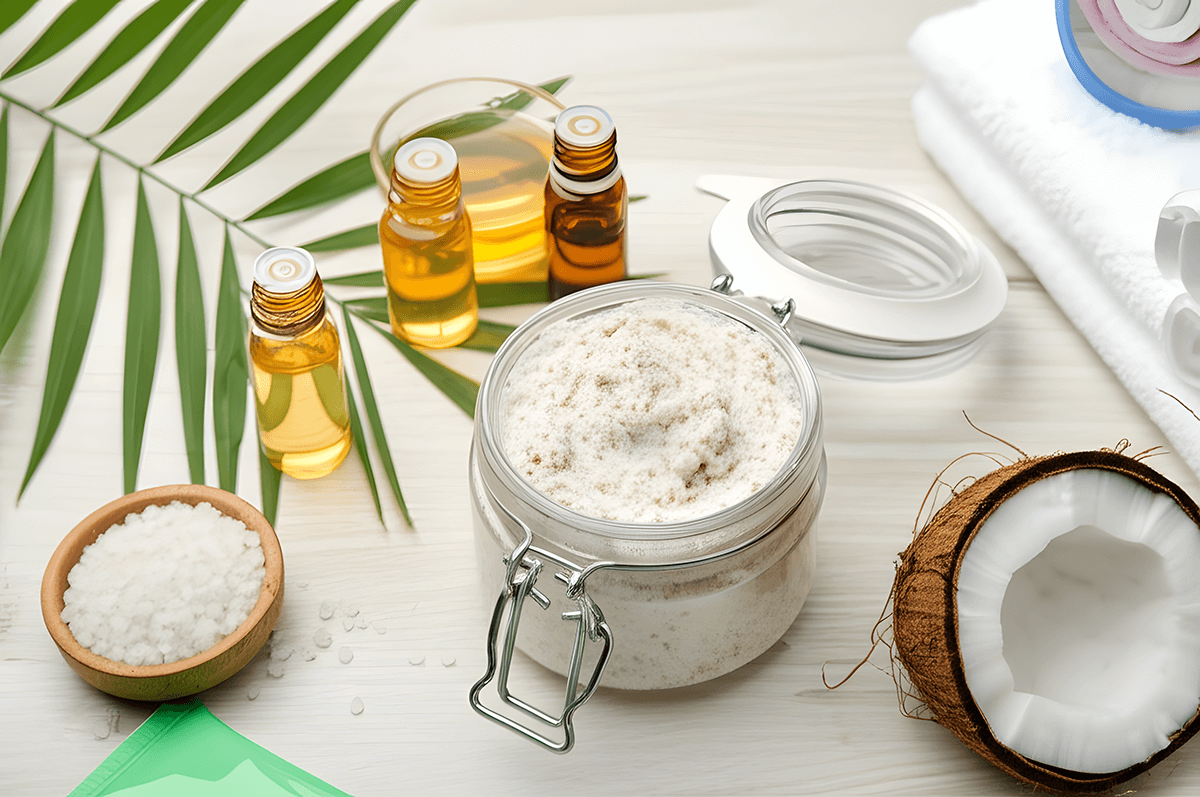The Role of Lymphatic Drainage, Effective Ingredients in Creams, and Myths About Wraps
Cellulite is a concern that many people face as they age, and it’s especially common after 30. It’s often seen as a natural part of life, but it doesn’t make dealing with it any easier. The dimples and lumps on the skin, most commonly around the thighs, buttocks, and abdomen, are due to the interaction of fat cells, connective tissue, and skin. As we age, changes in our hormones, metabolism, and lifestyle can make cellulite more noticeable.
While some treatments promise a smooth, dimple-free appearance, not all methods live up to their claims. In this comprehensive guide, we will explore the science behind cellulite, the most effective treatments, and the myths that have been debunked.
What Is Cellulite?
Cellulite is a condition where fat deposits push through the connective tissue beneath the skin. It affects up to 90% of women, and although it can appear in men, it’s more common in women due to differences in fat distribution and connective tissue structure. The primary causes of cellulite include:
- Hormonal Changes: Estrogen, the female hormone, plays a significant role in the formation of cellulite by affecting fat storage, skin structure, and blood flow.
- Genetics: Your family history can determine how your body stores fat and the structure of your skin.
- Aging: As you age, your skin becomes thinner, and the connective tissue can weaken, which makes cellulite more visible.
- Lifestyle Factors: Diet, exercise, hydration, and even sleep quality can influence the appearance of cellulite.
Despite its prevalence, many people are searching for ways to reduce the appearance of cellulite, often turning to expensive treatments or products. But which methods truly work?
Effective Methods for Treating Cellulite

1. Lymphatic Drainage: An Essential Component
Lymphatic drainage is a technique used to stimulate the lymphatic system, helping to remove waste, excess fluids, and toxins from the body. It’s widely believed that poor lymphatic circulation can exacerbate cellulite because stagnant fluids and toxins build up under the skin. By boosting circulation and reducing fluid retention, lymphatic drainage may help minimize the appearance of cellulite.
How It Works:
- Manual Lymphatic Drainage (MLD): A type of massage that targets the lymphatic system. Through gentle, rhythmic strokes, MLD encourages fluid movement and waste removal.
- Lymphatic Drainage Machines: Some modern treatments use devices to simulate lymphatic massage, applying pressure to the body to help improve circulation.
- At-Home Tools: Roller massagers, electric devices, and special brushes can mimic the effects of MLD when used regularly.
Is It Effective?
While there is no cure for cellulite, lymphatic drainage can temporarily reduce the appearance of cellulite. The improvement comes from the temporary reduction of fluid retention, rather than fat loss or structural changes to the skin. When combined with other treatments like exercise, healthy eating, and skin care, it can provide a noticeable improvement in skin smoothness.
2. Topical Treatments: Effective Ingredients in Cellulite Creams
The market is flooded with cellulite creams, each claiming to reduce the appearance of cellulite. However, not all products are created equal. Certain active ingredients have shown promise in research studies, while others have little to no effect.
Key Ingredients to Look For:
- Caffeine: Caffeine has long been a popular ingredient in cellulite creams because it can stimulate blood flow and temporarily tighten the skin. It works by dilating blood vessels and increasing circulation, which can help smooth the skin’s appearance. However, its effects are short-term, and it won’t permanently reduce cellulite.
- Retinol: Retinol is a vitamin A derivative known for its ability to stimulate collagen production. Collagen strengthens the skin’s connective tissue, which can make the skin appear firmer and reduce the visibility of cellulite. Regular use of retinol can lead to improved skin texture and smoother skin in areas affected by cellulite.
- Peptides: Peptides are amino acid chains that help promote collagen and elastin production in the skin. Some studies have shown that peptide-infused creams can improve skin firmness and elasticity, helping reduce the appearance of cellulite.
- L-carnitine: Often found in topical cellulite treatments, L-carnitine helps with fat metabolism. It has been shown to reduce fat deposits in some studies, but its effectiveness in treating cellulite is still under investigation.
- AHA (Alpha Hydroxy Acids): These exfoliants help slough off dead skin cells and can promote smoother skin by encouraging the turnover of skin cells. While AHAs alone won’t eliminate cellulite, they may contribute to improved skin texture.
Are They Worth It?
While topical creams containing these ingredients can improve the texture and tone of the skin temporarily, they don’t have a lasting impact on the structural changes causing cellulite. However, if you’re looking for a short-term cosmetic improvement, using a product with one of these active ingredients could provide smoother, firmer skin. Make sure to apply them consistently over time to see the best results.
3. Laser and Radiofrequency Treatments: Non-Invasive Options
For those seeking more effective results, laser and radiofrequency treatments offer non-invasive solutions for reducing the appearance of cellulite.
- Laser Treatments: These treatments use energy from lasers to break down fat cells beneath the skin’s surface. Some laser treatments, such as Cellulaze, also stimulate collagen production and help tighten the skin. Clinical studies have shown that laser therapy can provide long-term improvements in the appearance of cellulite, although results vary depending on the severity of the condition.
- Radiofrequency Treatments: This technique uses radiofrequency energy to heat the skin’s deeper layers, stimulating collagen production and tightening the skin. One of the most popular radiofrequency devices is Velashape, which combines radiofrequency with infrared light to improve skin tone and texture. Radiofrequency treatments can provide noticeable improvement in cellulite appearance, especially with regular sessions.
Are They Worth It?
Laser and radiofrequency treatments have proven effective in improving the texture of skin and reducing the appearance of cellulite. Laser treatments like Cellulaze can offer long-lasting results, while radiofrequency treatments can improve skin elasticity over time. However, both treatments are more expensive and often require multiple sessions for the best results.
Myths About Cellulite Treatments
1. Cellulite Wraps: A Waste of Money?
One of the most popular myths surrounding cellulite is that wraps — whether clay, seaweed, or herbal — can miraculously reduce the appearance of cellulite. These wraps are marketed as quick fixes, but most of their effects are temporary and purely cosmetic. They may make the skin feel smoother or tighter immediately after use, but they don’t address the underlying causes of cellulite, such as fat deposits or weak connective tissue.
Are They Effective?
The hydration and temporary tightening effects of wraps may make skin feel smoother, but they don’t eliminate or reduce cellulite long-term. These treatments are a waste of money if you’re seeking permanent improvements.
2. Cellulite Creams Alone Will Work
Many cellulite creams promise long-lasting results, but the reality is that these products provide only short-term, cosmetic improvements. They don’t eliminate cellulite, and their effects often fade once you stop using the product. Topical treatments work best when combined with other lifestyle changes, such as exercise, proper diet, and hydration.
Final Thoughts: Effective Cellulite Treatments and What to Avoid
When it comes to managing cellulite, there are several options available, but it’s important to manage your expectations and be realistic about what each treatment can achieve. Here’s a quick summary:
What Works:
- Lymphatic drainage (massage or devices)
- Topical creams with ingredients like caffeine, retinol, peptides, and AHAs
- Laser and radiofrequency treatments for more long-term improvement
What Doesn’t:
- Cellulite wraps and other quick fixes
- Single-use products without long-term commitment
Cellulite is a natural part of aging, but with the right treatments and lifestyle choices, you can significantly improve the appearance of your skin. The key is patience and consistency — results may take time, but with regular care, you can achieve smoother, firmer skin that looks and feels great.



